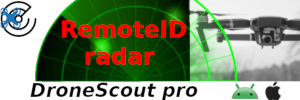I'm not exactly sure of your comment.. 'it is not a danger'
Say the drone is in a situation where the set RTH height is dangerous and you need to interrupt the flight to avoid something, you should still leave the sticks alone? We're obliged, according to my CAA test, to get out of the way of manned aircraft for example
I don't understand why it should 'just' be a safety feature? Dronie flight are pre-programmed too aren't they. that doesn't guarantee success or lack of potential damage either.
It has a useful function if used intelligently.. like any other function. In your opinion - why do you think DJI have enabled this on the newer firmware?
just curious.. each to his own.
RTH is set by the operator and is site specific, it should be set to clear tallest obstacle in your area with a slight margin. There shouldn't be, in 99% of the time, any need to adjust that flight. While plausible of the avoid question, again simply RTH is a safety function and made for when the aircraft loses signal or only has enough juice to get back home safely. If you don't have signal...you can't adjust that flight path anyway...and if you lose orientation same thing, one needs to be aware of what is around and below them. IF you don't know those things you certainly can't avoid any other aircraft.
Understanding how RTH works would help you understand and answer your own questions and concerns. So let's go with the one you do have control of. A manual RTH...say you lost it in the sky/orientation. When you engage RTH the first part of the sequence is the aircraft will yaw to face shortest possible nose direction to flight path home..it will then climb out to your set height. So in this instance if you lost your bird and hear a aircraft approaching (Sans ADS-B) you simply engage the RTH, count to say 5, and cancel it. Pull down stick if need be and hover till aircraft clears. From there snap camera from the down view that you used a "C" button programed to do so, and hit it again for forward view, if nothing is in front of you, push right stick forward and waalaa..it's home and land normally.

The autonomous flights of the newer DJI are done within radio range and will cancel if signal is lost, not so with mine, it will continue mission and as such if I sent it into a autonomous flight of a hazardous area that is on me as I cannot cancel or alter flight. I program on a mission hub on my computer, I test fly that mission online and always program higher than anything around...I then will go back and adjust altitudes if I wish.
As to why DJI added this feature in a later firmware....as mentioned they have always had it and probably missed it in the release of this aircraft. People began whining about the lost feature set and they enabled it again for said aircraft. They do silly stuff like that all the time.

As I mentioned I use RTH almost every flight to do special tricks/shots...it's much easier for me to do a quick RTH adjustment to get a cable cam shot than to try and program one on sight and waste flight time adjusting a mission. I have been doing this with DJI for right over 6 years now, something I got used to doing....but yes I have Litchi if I want to program as well.

BTW when I used the word Dangerous, I was referring to the drone itself as to hitting a wire or going to low below what was deemed a safe flight path...which BTW is always going to vary depending on where you are in relationship to the Drone. So if you had one 100 ft tree out there and set RTH to 125 Ft...the chance of you engaging RTH or RTH engaging itself and hitting that tree are not even a fraction of a chance in real world conditions..possible yes...plausible not really.











